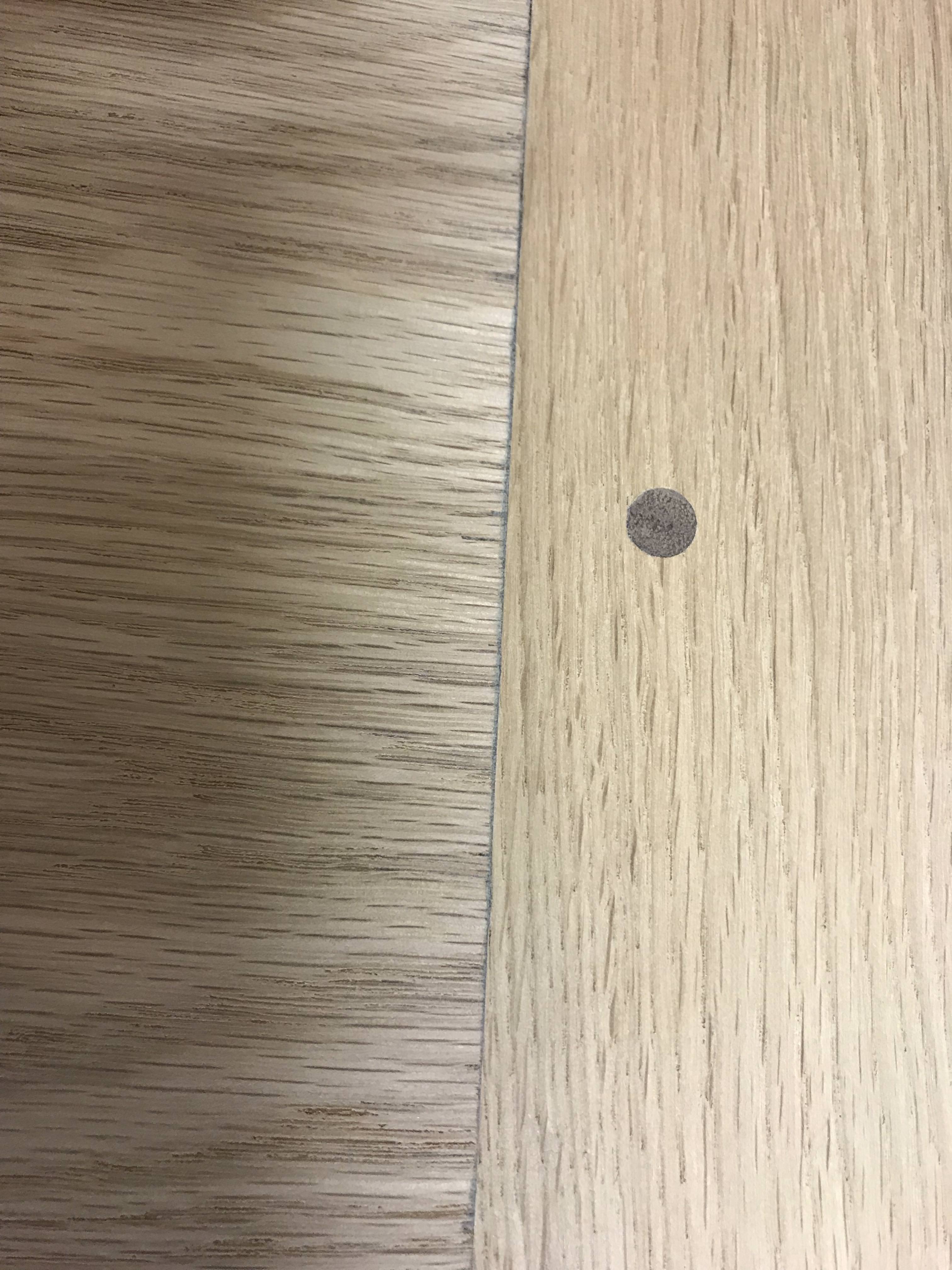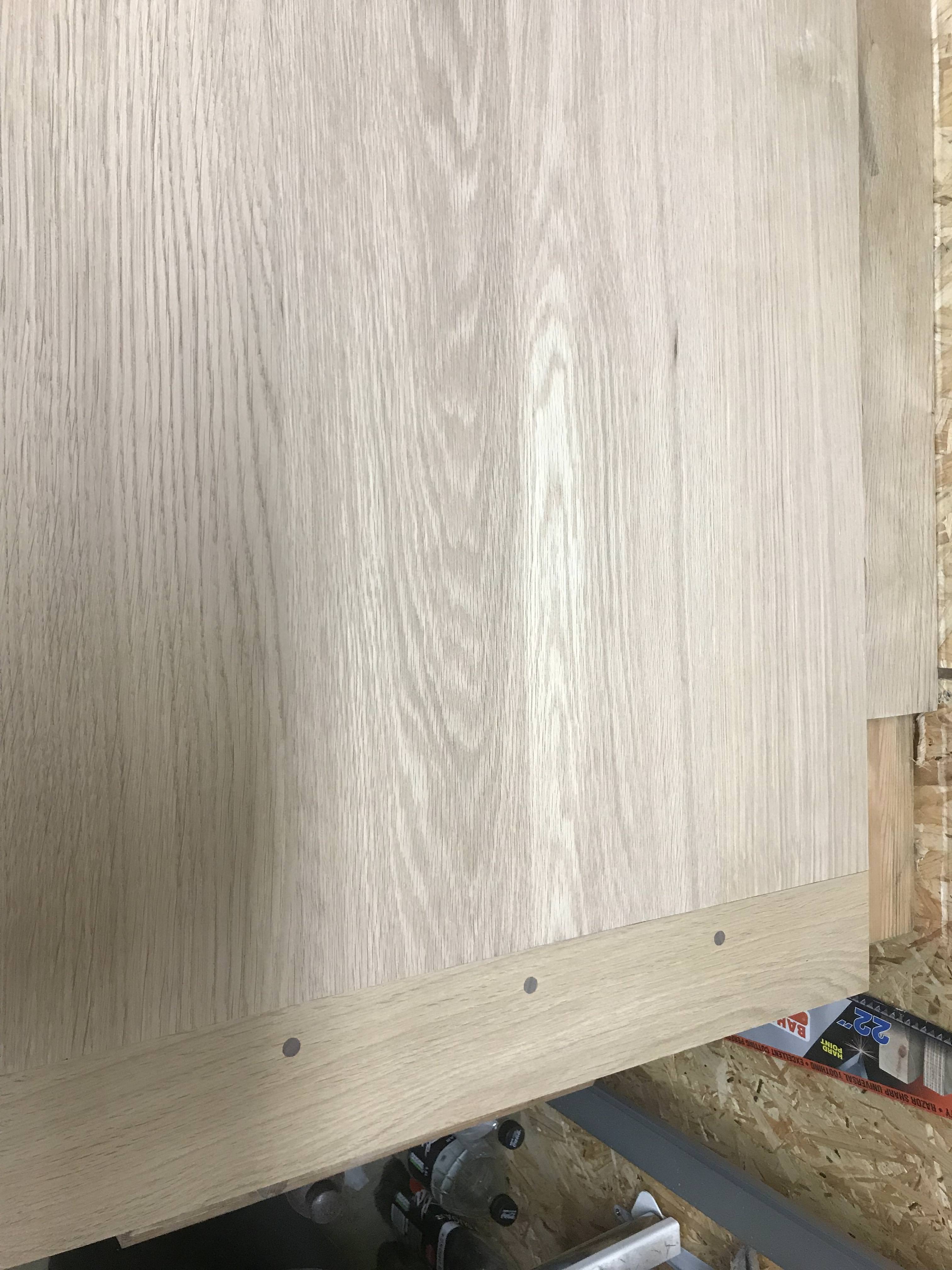memzey
Established Member
Hi gang,
So I’m making slow and painful progress on a coffee table for SWMBO and am essentially in the home straight. I’ve cut all the joinery for the base, glued up the top and fixed the breadboard ends. When I fixed those ends on, I glued about 2” of the tongue at the centre while leaving the rest to float and here is where my problem arises. When I fixed the breadboard ends, one had a bit of squeeze out at the shoulder. I cleaned this up with wet shop towels and went on my merry way. Now I’m sanding the top down and I have found that some of the towel appears to have become stuck in the shoulder and is casting a visible blue line:

Not good.
Any clever tips for sorting this out? I doubt anyone else has committed this particular act of oafishness before but perhaps someone might be able to offer a neat solution?
So I’m making slow and painful progress on a coffee table for SWMBO and am essentially in the home straight. I’ve cut all the joinery for the base, glued up the top and fixed the breadboard ends. When I fixed those ends on, I glued about 2” of the tongue at the centre while leaving the rest to float and here is where my problem arises. When I fixed the breadboard ends, one had a bit of squeeze out at the shoulder. I cleaned this up with wet shop towels and went on my merry way. Now I’m sanding the top down and I have found that some of the towel appears to have become stuck in the shoulder and is casting a visible blue line:

Not good.
Any clever tips for sorting this out? I doubt anyone else has committed this particular act of oafishness before but perhaps someone might be able to offer a neat solution?






































